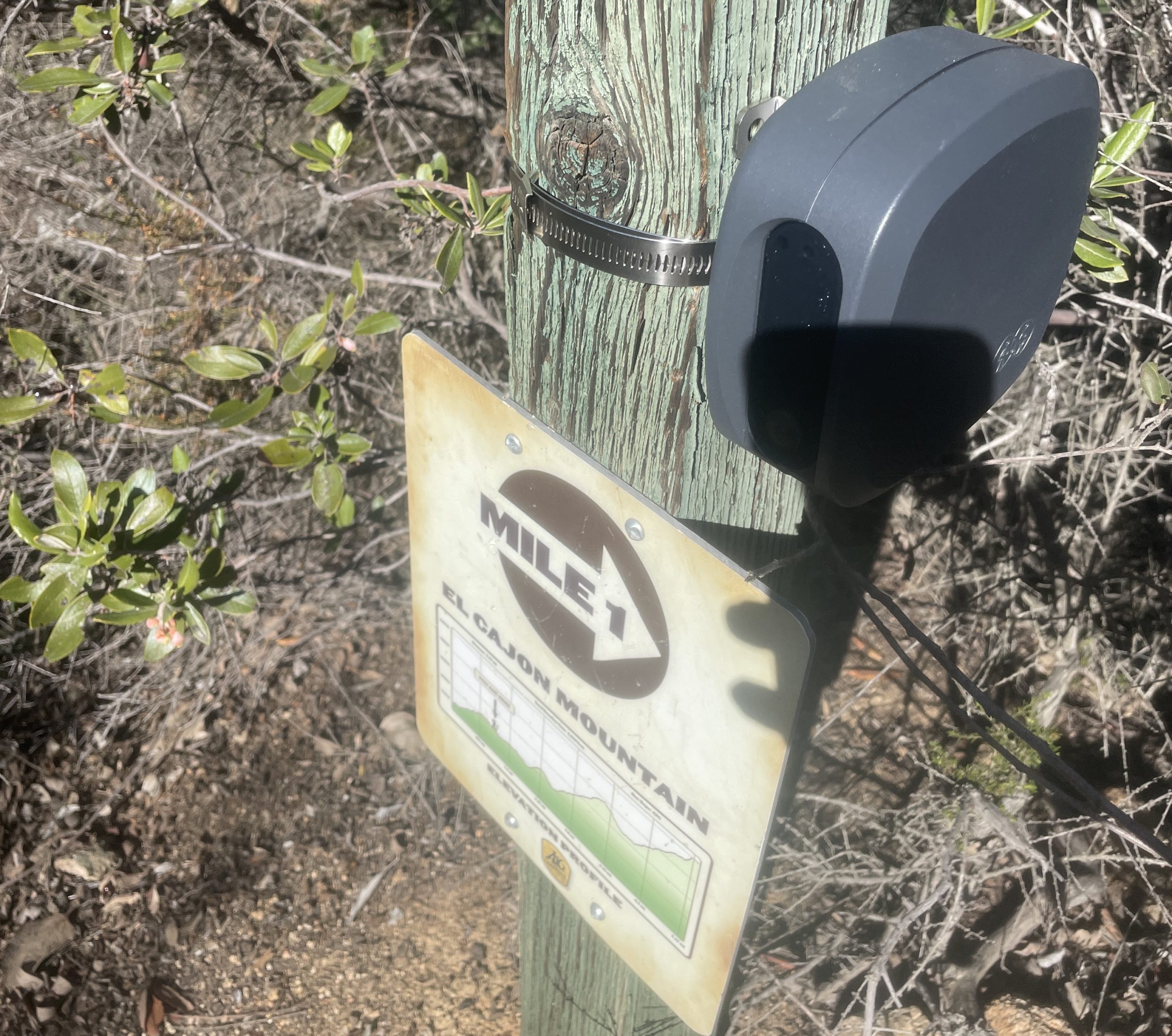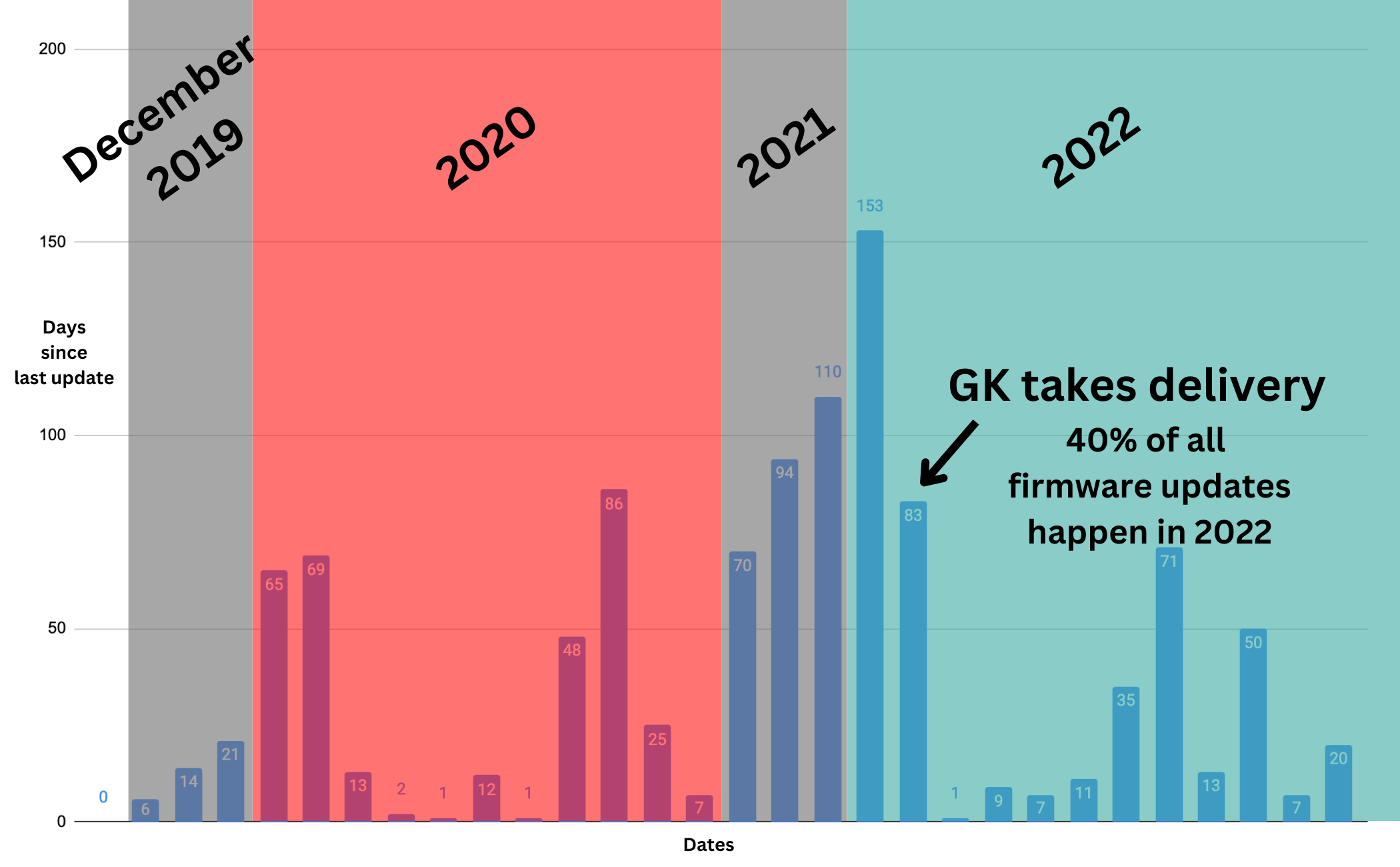Way back in February of 2022, I wrote a Helium Foundation grant to deploy people counters on a trail here in San Diego. The grant was approved, I used the first tranche to buy the devices, and then ran into a series of obstacles that are common enough in this world of business, IoT, and interaction with various local governments that it’s worth sharing them.
If you want to go back in time and read about the initial process, that post on the beginnings of the people counter project is here.
As we wind up the year (2022), let’s run through the main issues along with the solutions (or lack thereof). We’ll kick it off with “interacting with local governments”.
The whole idea for the people counter came from doing a fair amount of hiking on one of San Diego’s more famously difficult trails, the El Cajon Mountain trail. If you do the whole thing it’s a little under an 11 mile round trip with a few thousand feet of gain. Almost none of it is flat, and almost all of it is out in the sun with no shade protection at all.
From 30,000 feet (thanks Google Earth!) it looks like this:

Here’s the elevation view, just to give you an idea of what hikers attempt on this. There’s 2,100′ elevation different between the trailhead and the peak, and when you get to the top, well, you’re only halfway through!

Now, in 2022 I’ve watched 2 helicopter rescues and assisted in the evacuation of one hiker. I KNOW this trail is a challenge both for hikers and for the county rangers who watch over it. Knowing how many people attempt it, what the traffic load is on the trail, where most rescues happen vs how far most people get all seemed like valuable information to me. When I proposed the project to the local ranger, he agreed. Unfortunately, I didn’t get that agreement in writing.
Of the multiple challenges I faced in getting these set up, the first one was what killed it: I only got a verbal confirmation from the rangers that they wanted the project. While they were excited about it, their supervisors weren’t. I haven’t been able to sort out exactly what the problem was, but it’s somewhere between a recent county ban on all “surveillance technology” (which these people counters look like but are specifically not as they use LIDAR, not cameras, so no identifying features are collected) and them already having a plan to deploy people counters. As of late Dec 2022, I’ve only seen one people counter on that trail, and it’s at mile marker 1, pictured below. There may be more that I’m missing.

Either way, not having permission to deploy along the majority of the trail was the first big blow. I’ve written about surveillance tech and governments more over here but it left me with a bunch of trail counters and only a few miles of trail (the private land part) to deploy.
The trip into the private land adds about 100′ of gain and a mile to the round trip. Still, that doesn’t appear to stop inquisitive folks from going down the trail clearly marked “No trespassing”. I see boot prints on the path there every time I visit. The owners of the land are still on board with deploying people counters, which gives me about a mile to work with to find out how far down the path people are going. Are they 30 second inquisitors, or are they hardier? How often does it happen? Is it something worth developing a strategy for, or just worth it to keep an eye on?
So, that brings us up to speed on the first major obstacle, which is permission.
The second obstacle was, funnily enough, Helium coverage. The places I’d selected for Hotspots have an incredible view of what is probably hundreds of Hotspots across the greater San Diego area, but when I placed the very first people counter in a test run, the signal strength its antenna was picking up was too weak to reliably transmit data!
That seemed odd to me, as I’d tested the location with a GLAMOS using the included 0 dBi antenna and it seemed fine. What I hadn’t counted on was how weak the antenna in the device would actually be. While it’s rated at 1.2 dBi, the Molex 105262 patch antenna installed in the people counter was showing far worse performance in practice.

So, lesson number two: Make sure you test your location with the same antenna your device will use. Seems obvious in hindsight, right?
This brings us to the last obstacle, which is getting the thing to actually work. In broad strokes, any useful LoRa system includes a device that sends its data somewhere, decodes that data, and then displays that data somewhere in a useful manner. Conceptually it’s pretty easy to understand, but the details can be tricky. Every network, from Senet to TTN (The Things Network) to Actility to ones you’ve never heard of like Ventia or Axatel, all have a way of doing this.
Those methods are all pretty similar, but in the case of the Parametric devices there were two factors making for a challenging obstacle. First, Parametric is based out of Switzerland and focused (as far as I can tell) only on Europe. This means they don’t really have support or interest in devices in the US. Second, they seem to only work on TTN devices. This is fine if you’re in Europe and using TTN, but… I’m in America. And I’m using Helium. 🙂
Now, this is not to say that no support has been provided by Parametric. Sascha Jäckle, a managing partner and head of business development, has helped out over email with providing some guidance on how to get these thing working. It looks like they launched the People Counter as a product in late 2019, worked on it through 2020, then more or less forgot about it until I ordered them. Then they did 40% of all firmware updates in the last 9 months of 2022.

It’s safe to say Parametric is now aware of Helium and acknowledges that the market for devices that easily work on the Helium network is bigger than they initially thought. Still, it took a group of US based IoT enthusiasts in a channel I host on the GK Discord to actually bang their heads against the thing long enough to get the whole flow to actually work. The final piece on our end, a fully operational decoder, took until late December of 2022 to solve.
Now, it’s not like this group was working 40 hours a week on it; this was a volunteer effort at odd hours of the day, when they had time, by folks like @grayhatguy, @tteague, @nickytheblade, @rw4k, @falconpunch, and @.eddie E on Discord.
There are still a last few issues to solve with these things. The new 4.0 version of firmware released by Parametric in September of 2022 has a few bugs yet. All but one of the devices are deleting their own APPEUI and APPKEY, making them unuseable until that’s fixed. Still, we’ve made progress, and I’m looking forward to getting these deployed and testing in the field by the end of the first quarter in 2023.
That should catch you up to speed on the People Counter project. The big takeaways for me were:
-If you’re doing anything with a bureaucracy/government, get it in writing.
-running a LoRa based project without an engineering background is still too big of a lift to be practical
-the best of this entire IoT system is yet to come. I think we’ll massive gains in 2023 as all of the various development efforts begin to bear fruit, but it might not be until the third or fourth quarter.
In the meantime, I’ll keep plugging away at this grant project until I’ve completed it to the best of my ability. I’ve sent off 3 people counters to technical experts in my “IoT Support Group”. Four will be deployed onto the trail, and 1 remains at my home test site. That leaves me with a few more to place anywhere in the US915 area, so…if you’re reading this and want to participate in a People Counter project that helps spread the word about Helium and usefully contributes to solving a people counter problem, let’s take everything I’ve learned so far and put it to work for you!
As always, the goal here is to help as many people as possible learn from our shared experience and continually develop a better understanding of our world.
Rock on!

Leave a Reply